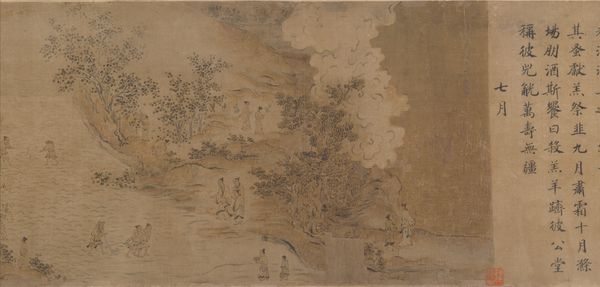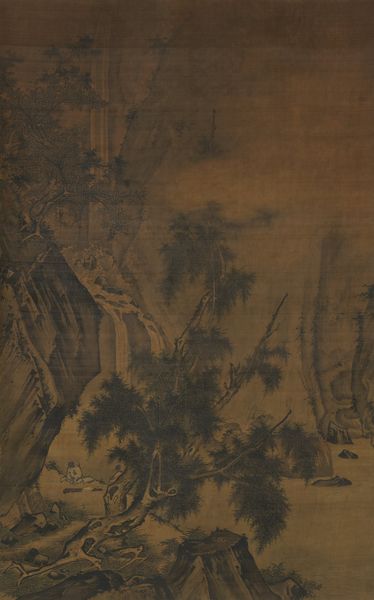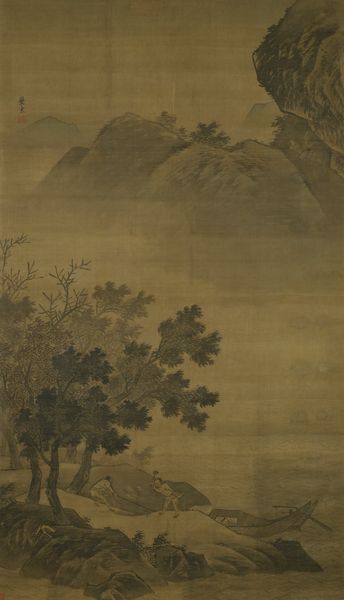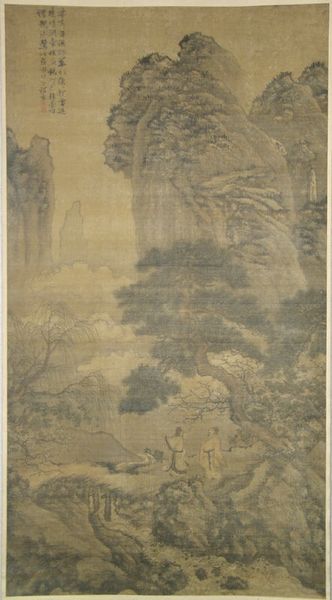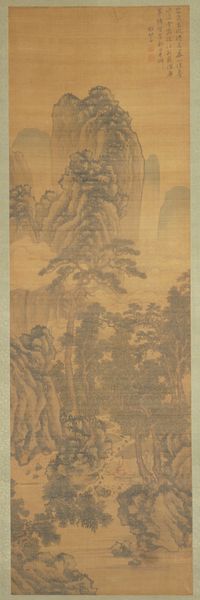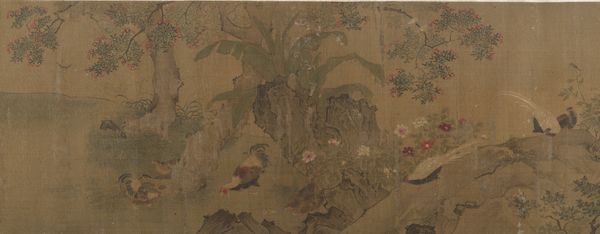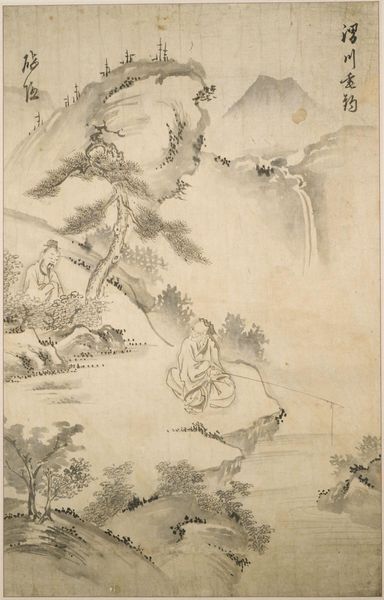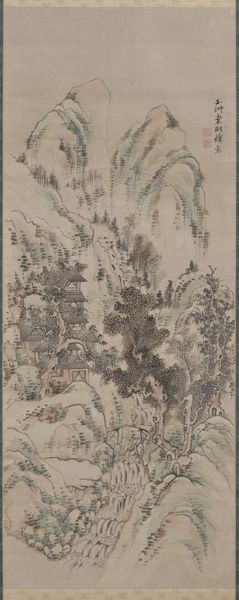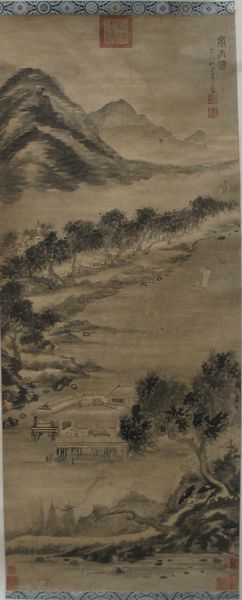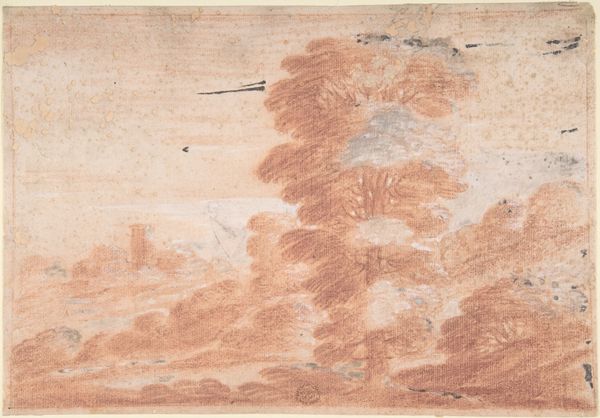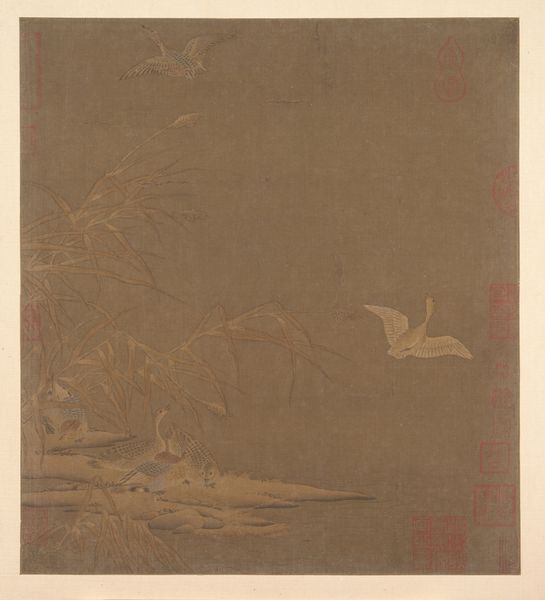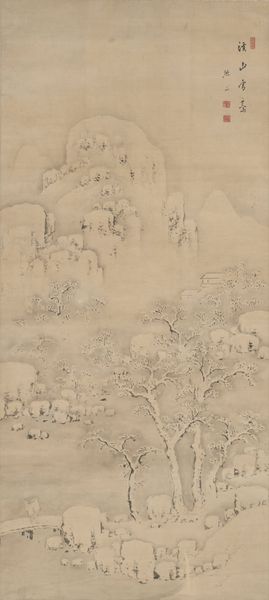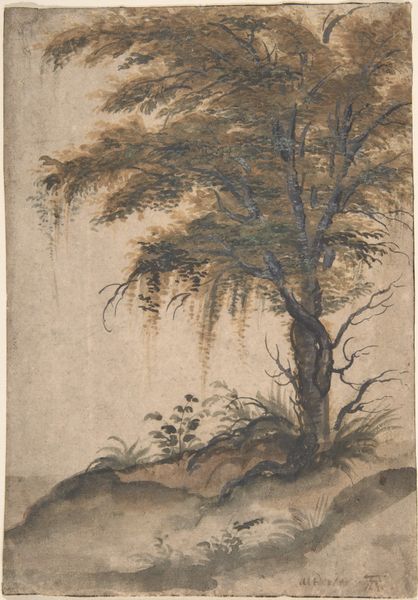
Landscape with Daoist Immortals Playing Weiqi Ming dynasty (1368–1644), 15th century
0:00
0:00
painting, ink
#
narrative-art
#
painting
#
asian-art
#
landscape
#
classical-realism
#
figuration
#
ink
#
orientalism
Dimensions: 175.2 × 106.7 cm
Copyright: Public Domain
Curator: The tonal gradations and subtle ink washes immediately strike me. There's a masterful handling of materiality that evokes a specific sense of calm. Editor: Calm indeed. And, a little melancholy perhaps? We’re looking at "Landscape with Daoist Immortals Playing Weiqi", attributed to Dai Jin, from the 15th century during the Ming dynasty. It’s a hanging scroll using ink on silk. You can find it here at the Art Institute of Chicago. Curator: Yes, the silk lends such a beautiful texture. Considering Dai Jin's status within the Zhe School, which promoted a return to Song dynasty realism, I can't help but notice how much it’s tied to the imperial court's evolving tastes at the time. Editor: Good point! The imperial gaze truly shaped artistic production. This piece reflects the literati culture, but with an emphasis on craftsmanship perhaps slightly more attuned to wider consumption. It’s figuration existing within landscape which suggests both classical influences while attempting to engage with Daoist principles, wouldn't you agree? Curator: Absolutely, there's the symbolism within the materials to unpack. The use of ink itself connects to scholarly pursuits and a cultured status; its availability shaping who gets to participate in making artwork. Look at how labor-intensive it must've been to layer these tones, how even in supposed scenes of leisure, artistic processes were rigorous! Editor: Speaking of leisure, playing Weiqi, the board game… it’s no simple pastime. It speaks of strategic thinking and refinement, core values that upheld the social order and meritocracy prized at court, regardless of if immortals were said to practice it. This image subtly reinforced those values. The imagery acts to suggest not just an idyllic scene, but that this scene has ideological implications. Curator: Definitely. It asks the viewer to consider material conditions within their philosophical context. Were the elite ideals as accessible as the scroll’s images propose? This work reminds us to delve deeper, prompting more questioning, and perhaps re-evaluating the narratives we inherit through institutional display. Editor: It also makes you consider how landscapes were used by painters to not only illustrate Daoist principles, but legitimize an ideal through its image and through that dissemination, shape social ideas of hierarchy. It also raises essential questions about cultural representation across time. Curator: It encourages critical thought about historical construction through production of artworks. A lot to chew on! Editor: Precisely. Thanks for a very revealing discussion about this serene yet politically potent piece!
Comments
No comments
Be the first to comment and join the conversation on the ultimate creative platform.
